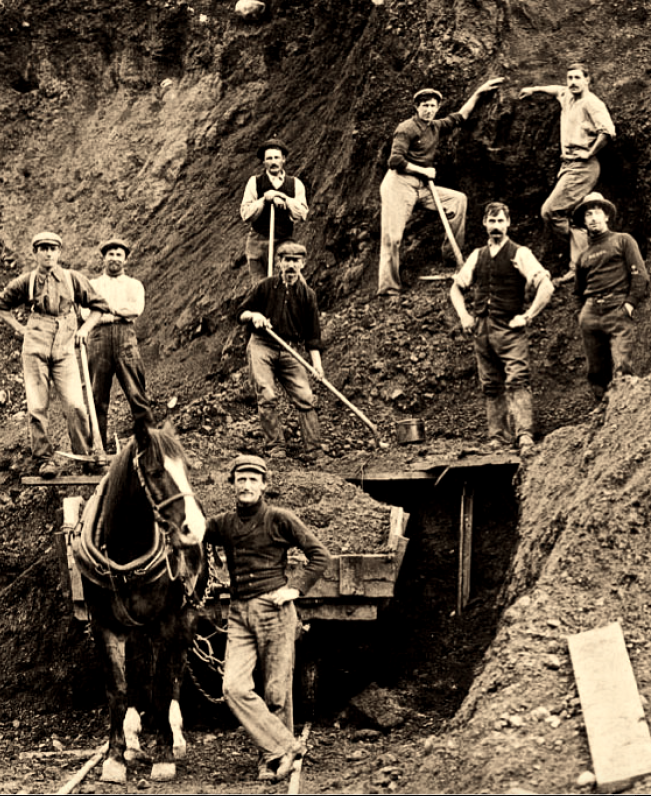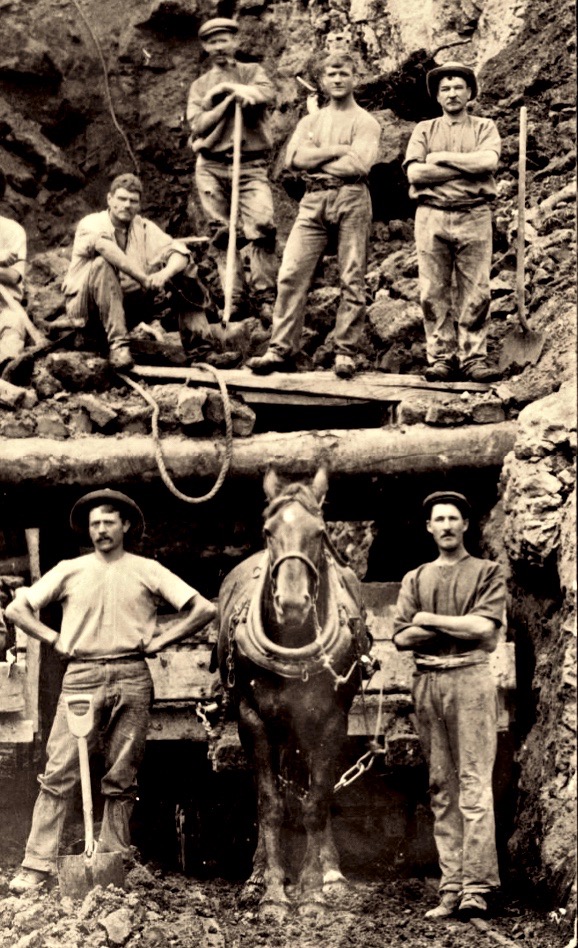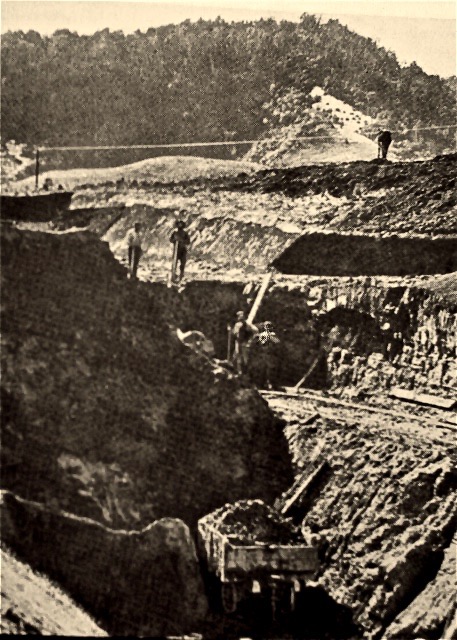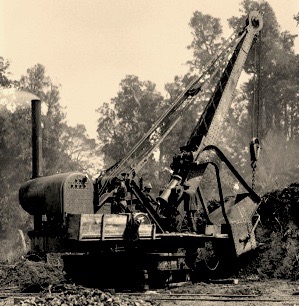|

The Waiouru Bank
A
workman’s letters home tell of how 500 men with shovels
and carts built the banked-up roadbed that carried the
North Island Main Trunk Railway Line down into the valley
below Waiouru.
1906 - Getting Started
McGonigletown tent
camp.
Murimotu
October 15th 1906
Dearest Enid,
The ten of us in our co-operative arrived at
Waiouru on the back of Tom’s dray two weeks ago.
There are five hundred men working here at the
three big cuttings above the Waitangi stream.
These cuttings, and the huge embankments filling
the gullies will take the North Island Main Trunk
line down 400 feet from Waiouru to the Whangaehu
River.
We were given a tent and have put it up on the
flat near the Waitangi waterfall. It is 10x8ft
with a wooden floor. We have built bunks from
manuka poles, with oat sacks stretched across them
for mattresses, and we’ve put up a corrugated iron
fireplace at one end.

Our co-operative has a contract to clear spoil
away from the second cutting. Tom backs old Clyde
up against the bank and we shovel the dirt down
into the dray. Sometimes we come across chunks of
shellrock and Dave loosens these with one of the
sticks of dynamite he keeps tucked inside his
woollen shirt. The sticks have to be kept warm to
keep them stable.
All sorts of men have been attracted here by the
good wages that the Public Works Department is
paying: gold-miners from Waihi and the West Coast,
and even from Queensland, Englishmen, Irishmen and
Negros, office workers, shearers and barmen.
For safety’s sake, we are only allowed to work
eight hours a day, but our syndicate is moving
enough dirt in that time for each of us to earn
about seven shillings a day, and Tom gets six
shillings a day for old Clyde. He buys chopped-up
oats for Clyde up at the top of the hill, from a
bloke with a chaff cutter powered by one of those
new Tangye steam engines, a 3-horsepower model.
Your loving husband
Edward X X
|
1907 - The Temporary Track
McGonigletown
tent camp.
Railend !
February 5th,
1907
My Darling Enid
Work trains have reached Waiouru on the new
line from Hunterville, and the line-layers
have built a temporary bypass track that
loops down the hillside to a metal pit here.
They are building more temporary track
across the Murimotu tussock plains to
Karioi, then through the bush country to
Ohakune.
During the long warm evenings we have been
amusing ourselves at the two-up school. And
our cabbage plot has been getting some
attention too. Cabbages grow amazingly well
here and they’ll make a change from beef and
potatoes this winter.
 |
 |
The PWD work trains are now running past our
tent on the switchback track and going all
the way to Rangataua. From there steel
girders are carried on a tramline all the
way to the Hapuwhenua Viaduct.
We are all upset by George Forsythe’s death.
He was riding on the step of the loco as it
went through that tight little cutting on
the switchback, and he got crushed between
the engine and the wall of the cutting. This
is a dry area, no liquor allowed, but to
farewell him we went across to the billiard
saloon and bought a few bottles of whiskey
under the counter from Ma Jones. The Taihape
police raided her place six weeks ago, but
the men in the co-operatives look after each
other here and there’s no fights, so she is
still selling it.
Your loving and lonely husband
Edward X X X
X
|
1908 - Almost Finished
Tangiwai
March 25th 1908
The cuttings and embankments of the Permanent Way
down to Tangiwai station are almost finished now.
The “Ruston Steam Navvy” has been widening the
cuttings, but we five hundred workmen with our
“Armstrong Patent Diggers,” as we call our
shovels, have done most of the work.
Yours in haste. Home soon!
Edward X X X
X
|

Tangiwai Railway Station
May the 1st
1908
Darling, we’ve done it! No more digging! A work
train came down the new line to pick us up and take
us to the Gretna at Taihape to celebrate. We stopped
near the top while a photographer chap took a
picture of us. We all felt very proud.
BIYLAVS Edward
|

I concocted these “workman’s
letters”, using old newspaper articles and photos that
I found on the Papers Past and Time Frames websites
of the National Library of New Zealand.
John Archer October 2009.
|





